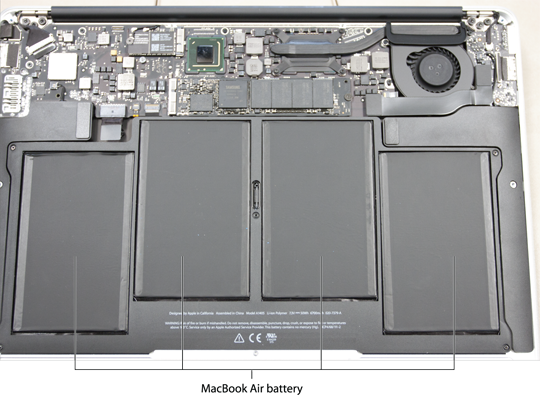Understanding the MacBook Air Battery
Like all Apple notebook computers, MacBook Air comes with an internal battery that enables you to operate the computer without an electrical outlet. Handily, the battery also serves as a backup source of power should the electricity fail.
Older notebook computers used rechargeable nickel metal hydride (NiMH) or nickel cadmium (NiCad) batteries. The NiMH and NiCad types are being phased out because they can suffer from a problem called the memory effect, where the battery loses capacity if you repeatedly recharge it without first fully discharging it.
More recent Mac notebooks used a rechargeable lithium-ion (Li-ion) battery. Li-ion batteries are lighter and last longer than NiMH and NiCad batteries. Most importantly, though, Li-ion batteries don’t suffer from the memory effect.
MacBook Air uses a rechargeable lithium-polymer (LiPo or Li-Poly) battery that, as you can see in Figure 9.1 (which shows the fifth-generation MacBook Air), is spread out into four sections to keep the entire battery assembly as thin as possible. A LiPo battery is a variation on the lithium-ion battery. It is generally smaller and lighter than a Li-ion battery, and it has about the same capacity.

9.1 MacBook Air’s lithium-polymer battery.

If you just bought your MacBook ...
Get MacBook Air Portable Genius, 4th Edition now with the O’Reilly learning platform.
O’Reilly members experience books, live events, courses curated by job role, and more from O’Reilly and nearly 200 top publishers.

